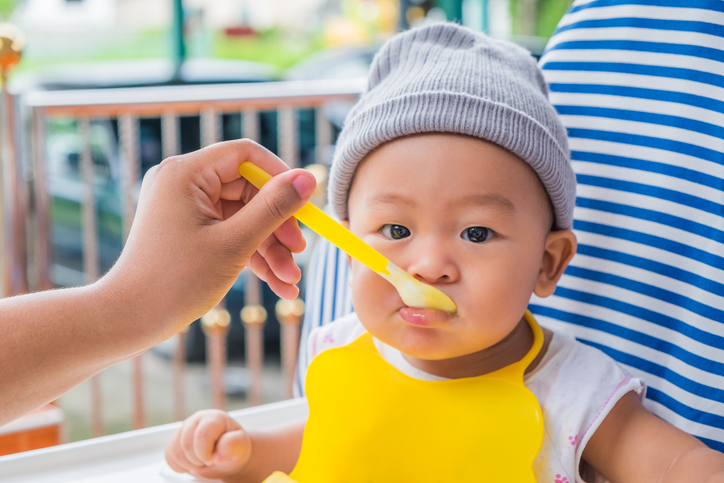
New research from South Australian Health and Medical Research Institute (SAHMRI) may have found a solution to improve iron intake among Australian infants (6m+) – iron fortified infant cereals.
The study, published in The Journal of Nutrition, analysed the diets of nearly 300 infants aged 6-12 months from across Australia and showed that adding one serve (18g, providing 6.3mg of iron) of iron fortified infant cereals per day to current diets increased total iron intake at the population level and decreased the percentage of infants not meeting iron requirements from 75% to 5%.
Low dietary iron intake is the leading cause of iron deficiency and three-quarters of Australian infants have intakes below recommended intakes (7mg), placing them at risk of iron deficiency.
One of the lead investigators, Dr Najma Moumin, says meeting iron intake recommendations is particularly challenging for infants between six and twelve months. During this period iron-rich complementary foods in conjunction with breastmilk are needed in order to meet the infant’s high iron needs.
“Prevention of iron deficiency during critical periods of brain development is essential to ensure a healthy start to life,” Dr Moumin said.
“In our study, few infants aged 6-12 months consumed iron-rich foods, such as red meat, poultry, fish and iron-fortified cereals, and those that did, consumed small amounts. Even if higher amounts of iron-rich animal-source foods were given to infants, it is unlikely they would meet iron requirements, given the small amounts of food infants consume.
“Our findings show that iron-fortified infant cereals may be an effective strategy for helping infants meet their iron requirements as they are specially formulated to meet their needs.
“Australian health authorities may need to consider advising parents to increase the amount of iron-fortified infant cereals in addition to nutritious family foods, consistent with the Australian Dietary Guidelines,” Dr Moumin said.
By law, iron fortified infant cereals are mandated by Food Standards Australia New Zealand to be fortified with between 20 to 50mg iron per 100g dry weight, meaning there’s a high percentage of iron in a low volume of food, which is ideal for infants aged 6-12 months.
The research was undertaken as part of the Australian Feeding Infants and Toddlers Study (OzFITS) 2021, supported by an unrestricted educational grant from the Nestlé Nutrition Institute (Australia).
Nestlé Australia Scientific Affairs Manager, Peter Fryer, said that supporting the OzFITS research was part of Nestlé Nutrition Institute’s commitment to improve nutrition for the next generation of Australians.
“Being able to partner with SAHMRI to undertake OzFITS – the first ever nationwide study of 0-2 year old children in Australia – has allowed for us to focus our research where there are clear gaps in knowledge, providing benefits to health care professionals, and ultimately, parents and children.
“The findings have provided extremely important insights, showing practical action that can be taken through consumption of iron fortified infant cereal, helping address the high rates of iron inadequacy among Australian infants.”
Notes
In Australia, it is recommended that infants be exclusively breastfed until around 6 months of age when solid foods are introduced. It is further recommended that breastfeeding be continued until 12 months of age and beyond, for as long as the mother and child desire. Source: The NHMRC Infant Feeding Guidelines 2013






